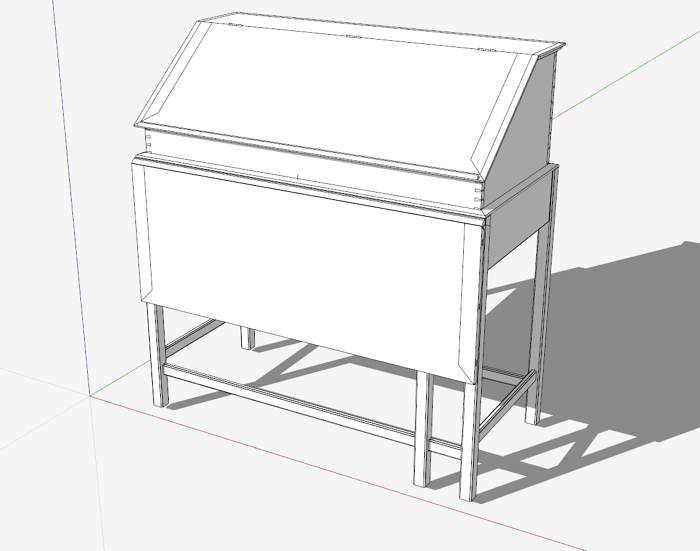
This is the second article on the early Virginian desk that was presented at Colonial Williamsburg at the conference, “Working Wood in the 18th C.” My last article showed the lower section (the Frame or Stand) and emphasized the design of the wooden hinge for the rotating gateleg for support of the writing surface.
In this article and the included video, I show the final modeling that includes the upper desk portion with its hinged lid. Here is the final model with the hinged desk lid closed and the writing surface in the down position.

I’ve opened the Desk Lid and raised the Writing Surface in the following picture. There are many pigeon holes and small drawers.

This is a closer view of one small dovetailed drawer.

In a rear view of the desk, I’ve raised up the upper desk portion to expose the internals of the lower frame or stand. You can see the large drawer that is accessible from the rear of the desk. Obviously, this is a desk that would be suited for location in the middle of a room.
The upper desk bottom acts as the upper drawer runner supports.

This is an exploded view of the lower Frame or Stand section of the desk. It shows detail joinery, details that may not be in the original desk. I’ve made assumptions about these details and cannot be sure how the original maker joined the pieces.

This is an exploded view of the upper desk portion. There are many stopped dadoes for partitions separating the drawers and making the pigeon holes.

And here is the video:
Tim
http://killenwood.com
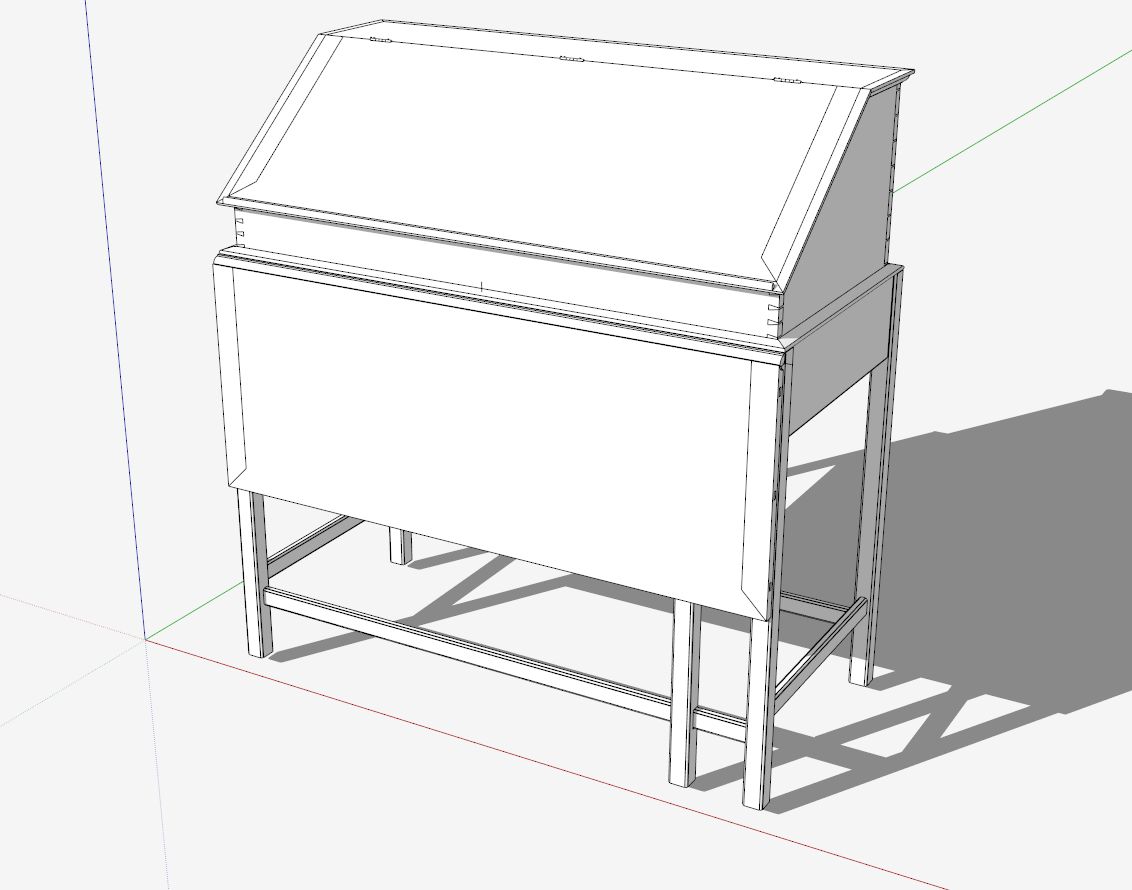
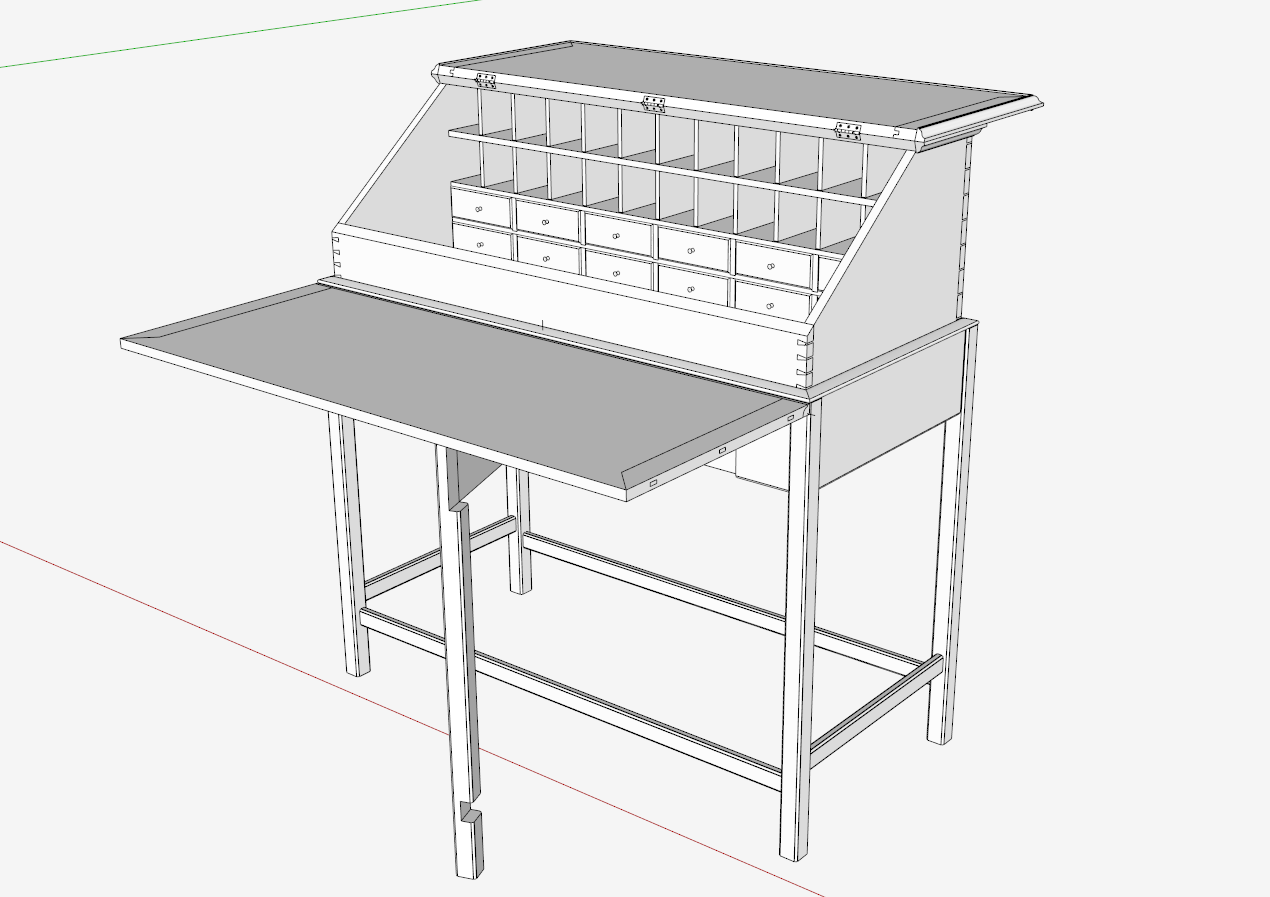
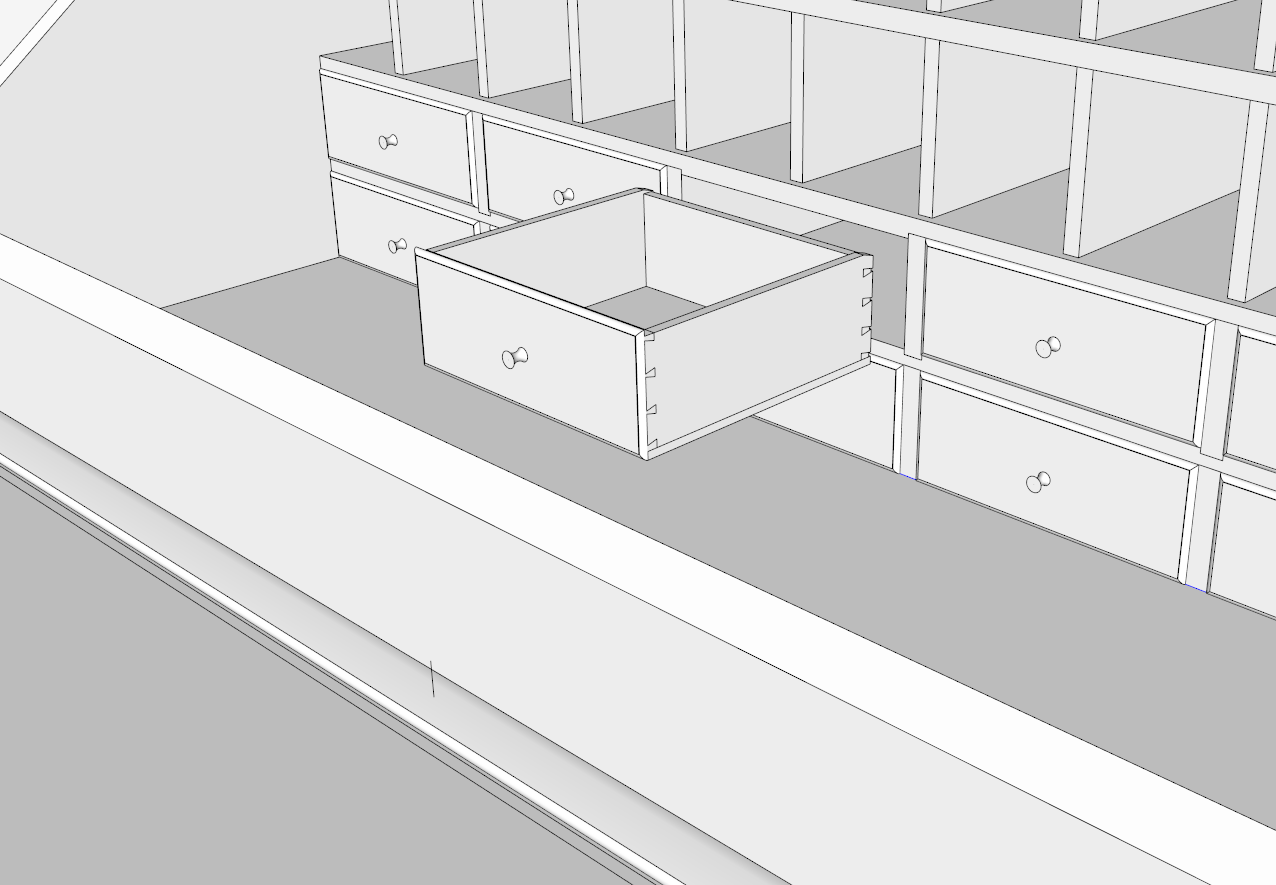
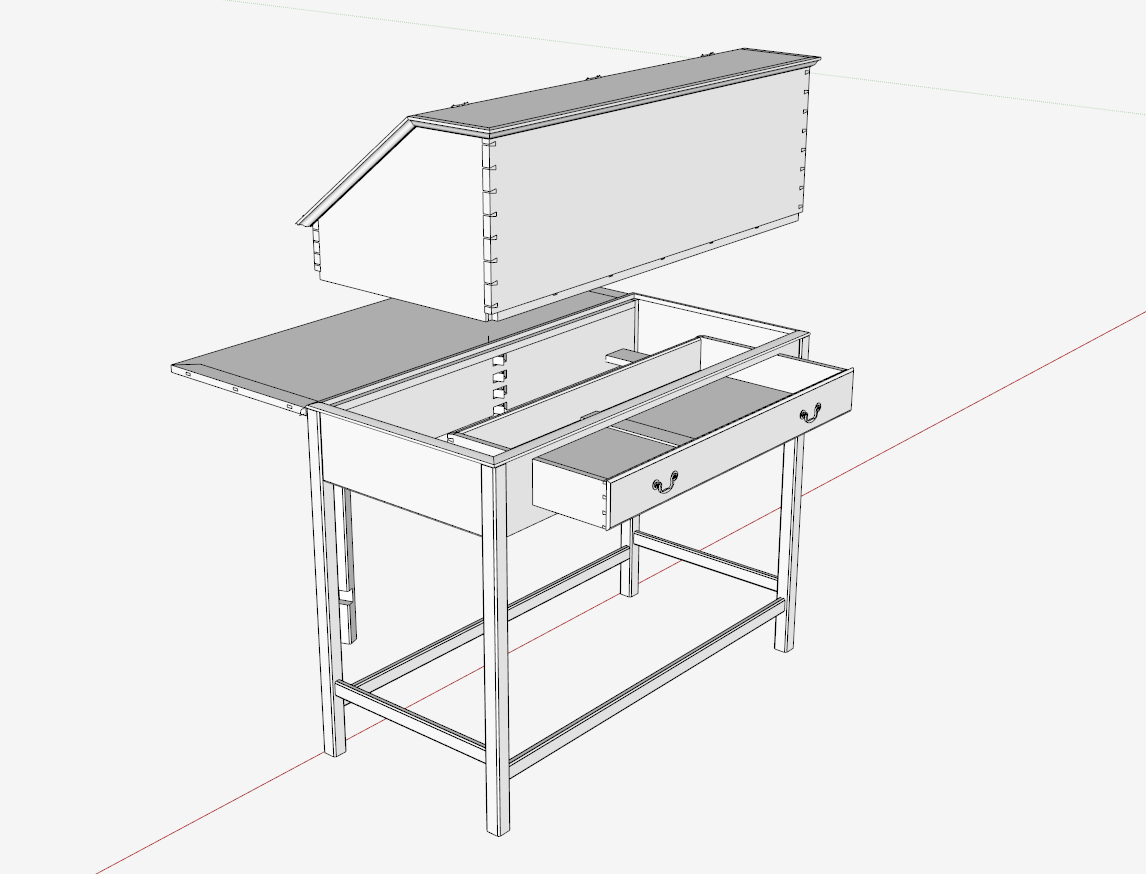
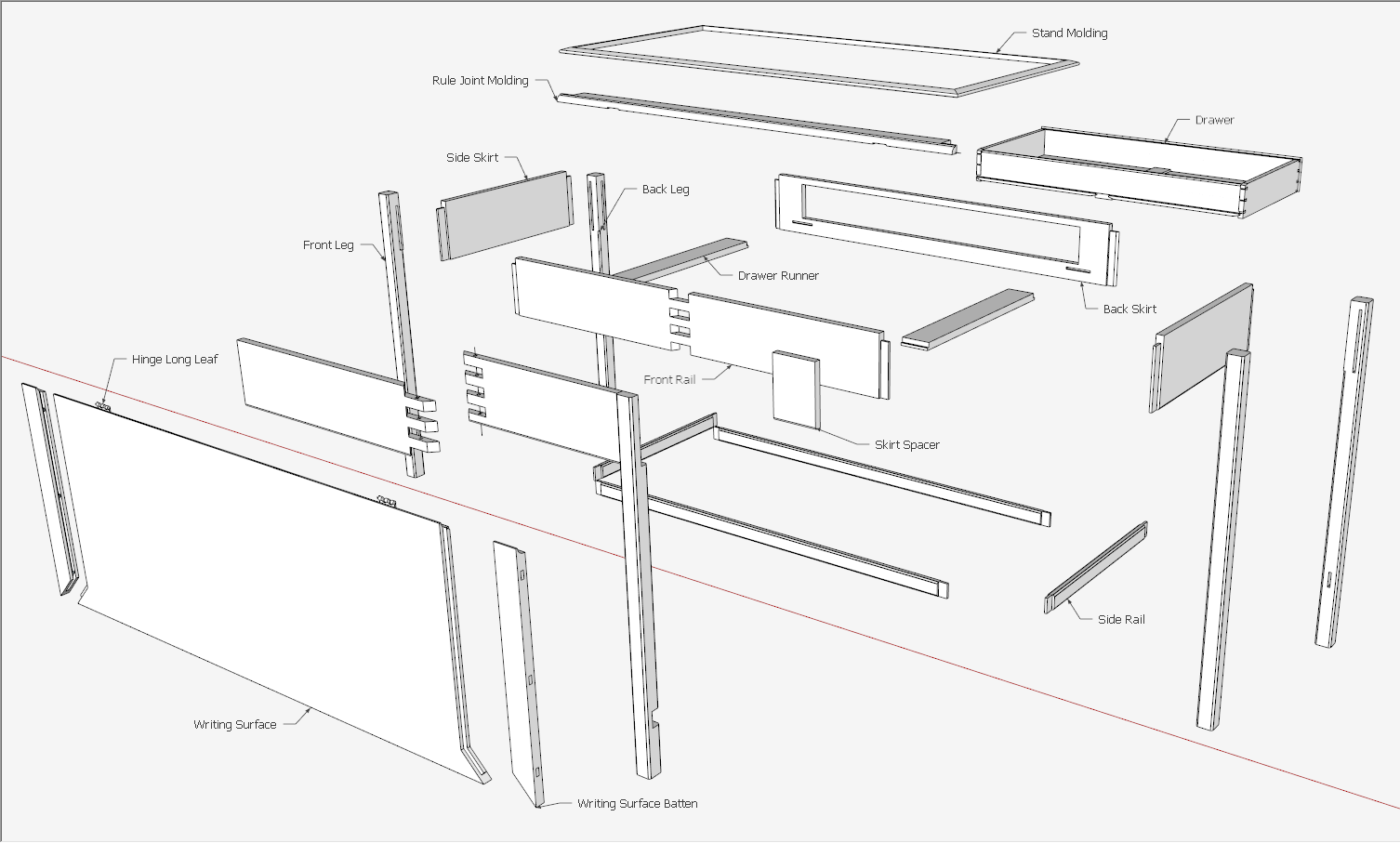
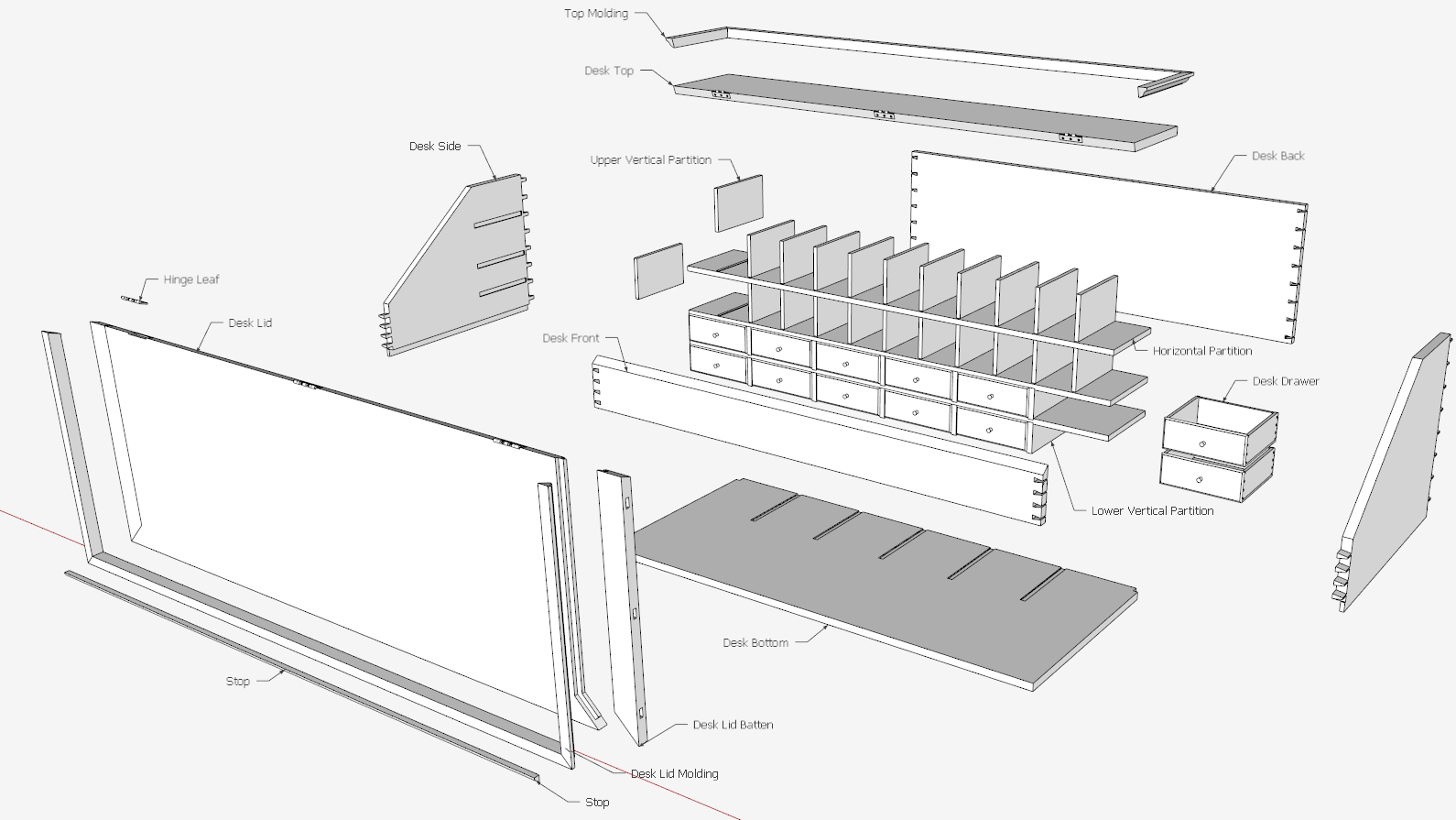




















Comments
What a beautiful writing desk! Unfortunately these days, people don’t appreciate this kind of thing and the unit will end up as some form of glorified storage.
Log in or create an account to post a comment.
Sign up Log in